Tile adds beauty, durability and value to any home. This mosaic tiled back splash is low cost but very time consuming, allow an entire week of on and off work.
This was my first home improvement project that I have ever completed, so yes, a beginner can do it. Prepare yourself for many compliments! The end result is well worth the time and effort you put forth.
Things you will need:
Tile
Towel
Hammer
Ceramic Tile Adhesive
Grout (Pre-Mixed)
Epoxy Grout Float
Plastic Putty Knife
Plastic Putty Knife/Paint Scraper 2”
Grout Sponge
Plastic Drop Cloth
Vinegar
General Purpose Scouring Pad
Spackle
Playtex HandSaver Gloves: XL
Safety Glasses with Wraparound Frame
Directions:
1.) Prepare the kitchen back splash for laying the tile. Remove old wallpaper, tile and any other wall material to get down to the plaster. Clean, dry and Spackle any wall imperfections.
2.) Break the tiles by laying an old towel outdoors on concrete. Fold the towel in half length wise and place an individual tile upside down to prevent chipping on tile. Fold the towel over the tile. Put on safety glasses. Using a hammer, strike the covered tile with medium force. Vary the size and shape of the tile pieces by repeating this process.
3.) If you are using various colored tiles for your project you will want to sort them into separate colored piles. Sorting the colors will save you time when you are searching for the exact piece you need.
6.) Once each tile piece has been laid out and adhered to the wall go back over the entire wall and look for any gaps that could be larger than 1/16″ or ½”. If there are gaps you can just break a few smaller pieces of tile and adhere them to the spots. Wait 24-36 hours for the ceramic tile adhesive to dry.
7.) Spread out a plastic drop cloth under the area you will be grouting. Determine if you have porous tile, which simply means, will it absorb moisture. If your tile is porous, then you will need to take a sponge and wet down your tile before you can grout. Wetting down your tile will keep the grout from staining your tile.
8.) Work in small sections at a time, taking care to wet the tile before grouting each section. Put on rubber or latex gloves to keep the grout from staining your hands. Using a rubber tile float
apply a generous amount of grout to a small area of tile. Spread the grout out across the tiles holding the float at a 45 degree angle on your first pass. To remove excess and push the grout into the cracks hold the float at a 90 degree angle using the edge of the float when coming back across the tile. Just take care to be sure each crack is filled in all the way, evenly, with no air bubbles.
9.) After applying the grout to your small area there should only be a small amount of grout left on the tile. Wait about 5 minutes for the grout to set a little then take a damp sponge and go over the tile using a circular motion. This will leave only a little hazing effect. Leave this effect on your tile and let it cure for 4-5 hours. Continue in this manner until your entire wall sections are done.
10.) After 4-5 hours take a kitchen pot type scrubber and straight vinegar to remove the haze from each individual tile. With a little scrubbing and the vinegar the haze comes off. Buff the tile with a clean, dry, white towel.
11.) Caulk to seal the area between the cupboard and the tile using clear caulk after the grout has cured 24 hours.
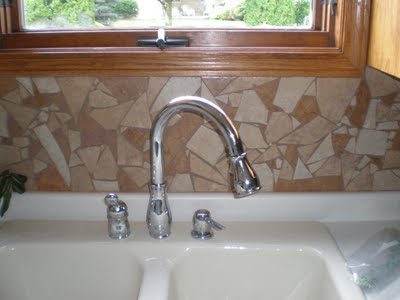
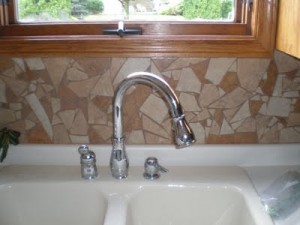

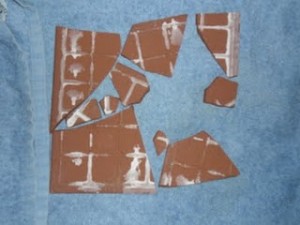
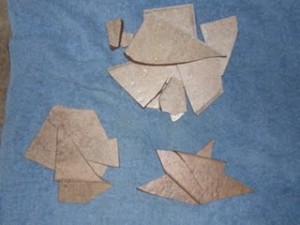
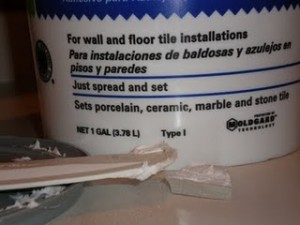
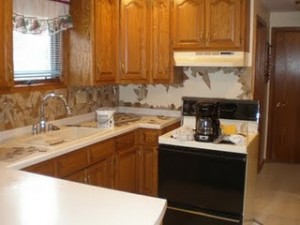
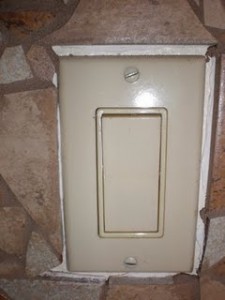
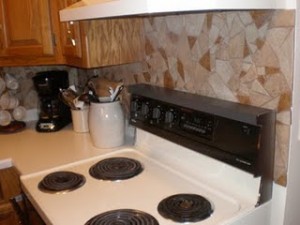
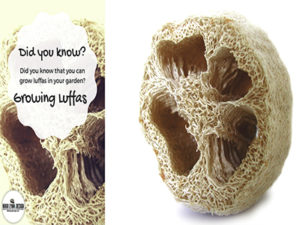

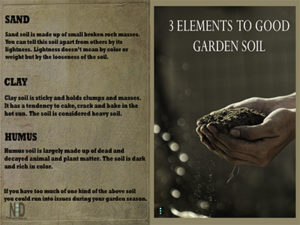
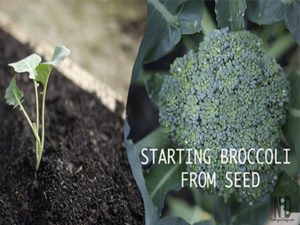


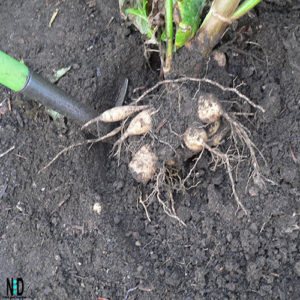






hotshot bald cop
September 2, 2011 at 10:46 AMI didn’t know you could do something like this. Thanks!
Grand Palace
September 17, 2011 at 10:20 AMYou have really interesting blog, keep up posting such informative posts!
Subway Tile Bathroom
October 11, 2011 at 2:44 AMSimply wish to say your tile how to article is astonishing. The clarity in your writting is just great and even though I can tell you’re not an expert on the subject, I have to say you did a FINE job. It is easy to follow and understand. Thanks one million and please carry on the rewarding work.
linux vps hosting
October 15, 2011 at 11:32 AMI love the step by step effort you have put in this tile tutorial. I had never had seen this techinque done before, I love it. Thinking I could do this and just might try too. Simply stunning!
Ammunition
October 18, 2011 at 6:31 AMF*ckin’ tremendous artistic talent here and I mean that WITH respect. I am very happy to see your article. Thank you so much for sharing your time and talent with those, like me, that are lacking in this department. I like that fact you spell everything out so completely for me to understand. Keep them coming and I will read them.
Widman
October 19, 2011 at 12:45 AMI get irked when folks consider to do tutorials that they plainly don’t understand about. You managed to hit the nail upon the head and have outlined the whole process in a fashion I can understand completely. Will likely be back to get more. Thanks!
Oli
December 7, 2011 at 12:08 PMThis blog is a good source of information. I designed my bathroom backsplash using your How to Use Broken Tiles to Achieve a Mosaic Back Splash, my project turned out wonderful. I have received many compliments.
Design Bathroom
December 14, 2011 at 4:20 AMI’m really glad that you’ve created your own website and have exposed the world to your thoughts and talents. I love your work and feel I can relate to what you’ve done. Many folks can’t even imagine having such talent. I hope that you know how lucky you are. 🙂 Good luck to you in all your endeavors. 🙂
grout cleaning
December 16, 2011 at 7:47 AMThanks a bunch for sharing this with us you really know what you’re talking about! Bookmarked and linked back from our website. Kindly additionally consult with my site =). Please consider a link exchange among us.
URL
March 23, 2012 at 11:01 AM… [Trackback]…
[…] Informations on that Topic: nikkilynndesign.com/2011/06/how-to-use-broken-tiles-to-achieve-a-mosaic-back-splash-in-your-kitchen.html/ […]…
Chis Hitch
June 14, 2012 at 9:06 AMI want to thank you for this fantastic read!! I was looking to do something different with my kitchen and this looks easy enough to do without breaking the bank. It is something I can work on in steps, which is what I needed.
Benedict Blaylock
August 20, 2012 at 3:57 PMAmazing! This would be a way to salvage some of the tiles from old jobs that I do. I could repurpose them to achieve this look in kitchens and baths. Would you mind me using your pictures to show clients what can be done?
Nikki
September 22, 2012 at 12:02 PMBenedict, I will reply via e-mail to this question. We can work something out through private messaging.